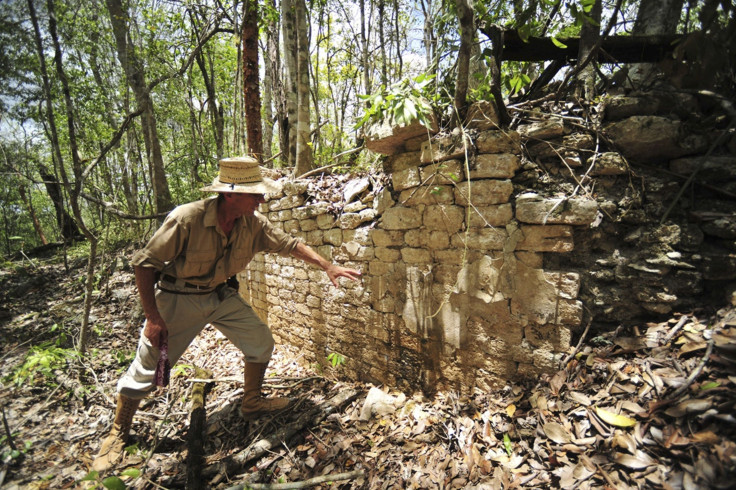
Hiding in the Mexican jungle are two ancient Mayan cities that have just been discovered by archeologists in the southeastern region of Mexico. The cities contain a huge mouth doorway, ruined pyramid temples and remains of a palace, reports Discovery News.
"Aerial photographs helped us in locating the sites," expedition leader Ivan Sprajc, of the Research Center of the Slovenian Academy of Sciences and Arts (ZRC SAZU), said to Discovery News. Sprajc and his team made the discovery while exploring the area surrounding an earlier discovery made.
Last year, his team discovered a lost city in the Campeche province on the Yucatan peninsula, which has pyramids and palaces, in the jungles of southeastern Mexico. The archeologists named the city Chactun which translates to "Red Rock" or "Large Rock." The site of the lost city is 54 acres and is believed to be from the Late Classic Maya period from 600 to 900 AD. During this period, the Mayan civilization was already declining and fell apart shortly thereafter due to a wide array of causes including: climate change, demographics and warfare. The researchers believe the lost city could have been home to as much as 30,000 to 40,000 people, but note that these are rough estimates that need to be verified.
Researchers have made another discovery in the ancient Mayan ruins earlier this month. In an announcement, according to Live Science, archeologists revealed that two artificial lakes -- each with the capacity to hold enough water to fill 10 Olympic-size pools -- were discovered. The reservoirs, called "aguadas," are similar to outdoor pools but serve as a community water supply. Researchers believe the artificial lakes were created to supply water during the dry seasons.
"We found that the bottom, which is at a depth of 2 meters [6.6 feet], was covered with ceramic shards — probably from plates — practically without any gaps," said Nicolaus Seefeld, a member of the German-Mexican archeological team that made the discovery, to Live Science.
Earlier this year, the ancient Maya city of Calakmul and the tropical forests of Calakmul have been added to the World Heritage Sites list, according to the National Anthropology and History Institute (INAH). The region added to the list is roughly 1.78 million acres and constitutes the souther portion of the Calakmul Biosphere Reserve.
"The site is located in the central/southern portion of the Yucatan Peninsula, in southern Mexico and includes the remains of the important Maya city Calakmul, set deep in the tropical forest of the Tierras Bajas," UNESCO said in a statement posted on its web site. "The city played a key role in the history of this region for more than 12 centuries and is characterized by well-preserved structures providing a vivid picture of life in an ancient Maya capital. The property also falls within the Mesoamerica biodiversity hotspot. This hotspot is the third largest in the world and encompasses all subtropical and tropical ecosystems from central Mexico to the Panama Canal."
© 2024 Latin Times. All rights reserved. Do not reproduce without permission.
